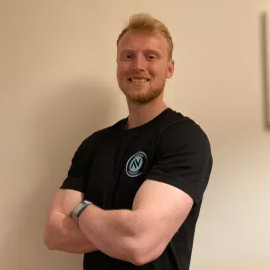This yoga-inspired workout builds full-body strength – and it only takes four minutes
Strengthen your body and calm your mind with this short routine


HIIT sessions have a time and a place, but the thought of an onslaught of burpees after copious amounts of Christmas food is enough to set our stomachs churning.
Luckily, bouncing around your living room isn't the only way to get a great workout. This yoga-inspired sequence provides a low-impact alternative designed to calm your mind and strengthen your body simultaneously.
It doesn't require any equipment either, thought it's preferable to have some extra padding from one of the best yoga mats if your floor isn't carpeted.
This workout has been designed by yoga and wellbeing teacher Esther Marie, who describes it as "a moving meditation".
"It’s a sequence that merges upper-body, lower-body and core strengthening moves," she explains. "The bodyweight postures that we use in yoga have been remixed to create this strengthening circuit with added mobility that will support, center and calm [your] body and mind."
The session consists of just four movements; knee drive lunges, child's pose to push-ups, single-leg bent lotus lifts and single-leg cycling. Each exercise is performed eight times, and if it's a unilateral movement (engaging one side of your body at a time) then it's completed eight times on each side.
This circuit should take you around four minutes finish, and Marie says you can repeat it two or three times if you want a longer workout.
Start your week with achievable workout ideas, health tips and wellbeing advice in your inbox.
Watch her video below to learn how to perform each movement, then practice each exercise to perfect your form before giving the workout a go for yourself.
Watch Esther Marie Yoga's full-body workout
A post shared by Esther - Yoga & Wellbeing Teacher (@esthermarieyoga)
A photo posted by on
People often use HIIT workouts for fat loss as they spike your heart rate by squeezing intense bursts of exercise and minimal rest times into time-efficient sessions. However, there are benefits to slowing down every once in a while.
A study published in the npj Science of Learning journal found that university students who took part in a short bout of low-intensity exercise before class displayed improved mood, increased vigor and decreased fatigue.
Meanwhile, a 2019 systematic review from the British Medical Journal concluded that "higher levels of physical activity — regardless of intensity level — and lesser amounts of sedentary time are associated with lower risk for premature mortality".
Or, in other words, any form of exercise is better than none at all, and a low-intensity, low-impact workout like this one can be a great way to get moving during the holiday season.
Other alternative exercise ideas that could help you stay active during this festive period include our Pilates for beginners plan and these anti-aging yoga moves.

Harry Bullmore is a Fitness Writer for Fit&Well and its sister site Coach, covering accessible home workouts, strength training session, and yoga routines. He joined the team from Hearst, where he reviewed products for Men's Health, Women's Health, and Runner's World. He is passionate about the physical and mental benefits of exercise, and splits his time between weightlifting, CrossFit, and gymnastics, which he does to build strength, boost his wellbeing, and have fun.
Harry is a NCTJ-qualified journalist, and has written for Vice, Learning Disability Today, and The Argus, where he was a crime, politics, and sports reporter for several UK regional and national newspapers.